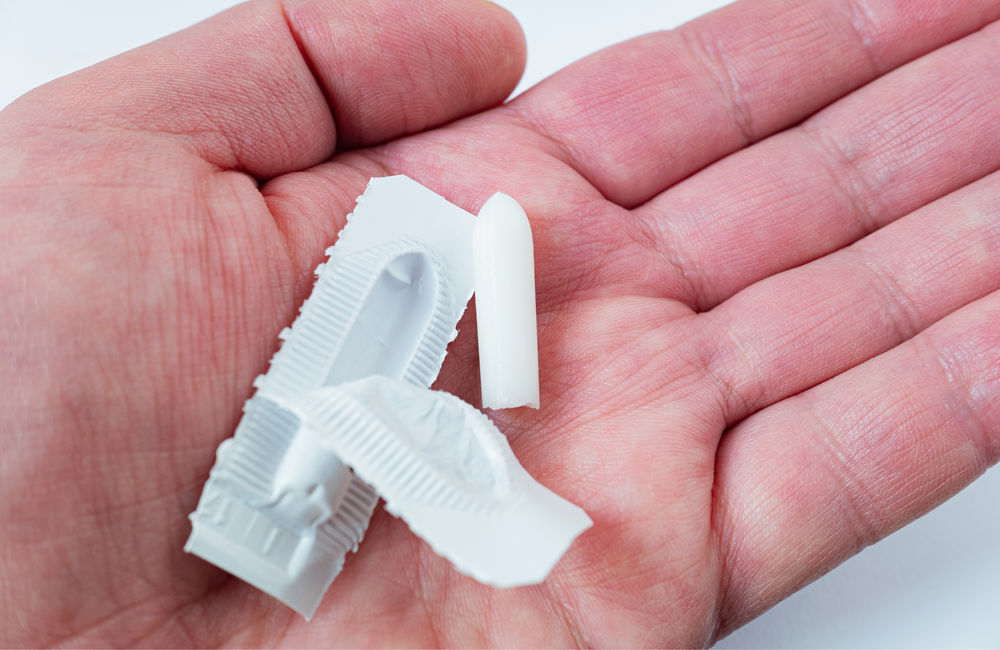
A clinical trial showed that most people who have receptive anal sex rated enemas, suppositories and rectal inserts as highly acceptable methods to use rectal microbicides, an experimental HIV-prevention strategy that does not yet have an effective formulation. The racially diverse and multinational participants tried all three methods, which were loaded with placebos, and reported how often they used them and how well they liked them. Of the three products, suppositories scored the lowest with the proportion of people who used them consistently and who rated them as highly acceptable at 66% and 74%, respectively. More than 70% of people consistently used enemas and inserts regularly, and more than 75% rated them both highly.
Rectal microbicides are an experimental technology, intended to deliver HIV-prevention medicine to anal and rectal tissue prior to sex. The hope is that, one day, microbicides will offer prophylactic protection from HIV for people who don’t want to take or don’t have access to oral or injectable PrEP. To date, the most common delivery method tested as a rectal microbicide has been as a gel, similar to commonly used sexual lubricants. However, researchers have been unable to develop a safe and effective gel which spreads far enough in the rectum to maximise protection against HIV. Inserting sufficient quantities of the gel has required people to use a plastic applicator – an additional step that goes beyond the way they use lubricants and may mean that people may be less likely to use gels or enjoy using them.
Dr Jose Bauermeister of the University of Pennsylvania School of Nursing and colleagues say that we need additional methods to deliver HIV-preventative microbicides. As these must be ones which people are ready to use, they evaluated how participants in a clinical trial rated enemas (also called douches), suppositories (3cm long) and inserts (1.5cm long) after using them during receptive anal sex. Each modality was loaded with a placebo, meaning that none included drugs that would prevent the spread of HIV. The trial—conducted in Peru, South Africa, Thailand, Malawi, and the United States—was a cross-over design, meaning all participants used each of the three products for four weeks.
The study included about 90 participants in three US cities and about 30 people from each of the other countries. Among the 217 participants, the vast majority (80%) were cisgender men—men whose gender matched the sex they were assigned at birth. Of the remaining people, 19 were transgender females, 2 were transgender males, and 2 were cisgender female. The racially diverse group ranged in age between 18 and 35 years, with the mean age being 25 years.
During each four-week evaluation period, the participants reported having receptive anal sex an average of nearly five times with an average of three male sex partners. Participants reported the frequency of use and satisfaction (on a scale of 1 to 10) with study products at the end of each four-week period. Scores of 7 and higher were rated as “high acceptability.”
The proportion of people who reported using a method on all occasions they had receptive anal sex was 83% for the enema, 75% for the rectal insert, and 74% for the suppository. The amount of people who rated the enemas, inserts and suppositories as highly acceptable was 73%, 72%, and 66%, respectively. In addition, all of the placebo modalities were deemed safe, with 33 mild adverse related events, including discomfort, pain, and diarrhoea. The two moderate adverse events that occurred were itching and malaise.
Participants in one of the US cities—San Francisco—reported the lowest frequency of use and satisfaction across the three different delivery methods. The authors speculate this could be due to the high availability of PrEP in the city, which may give these participants a different perspective on how acceptable the three topical methods were.
Given that each method used a placebo, the trial did not assess the effectiveness of microbicides in preventing HIV. Other limitations include biases that may result from people self-reporting results and having to recall their experience at the end of a four-week evaluation period.
While the researchers acknowledge their results may not apply to everyone who engages in receptive anal sex, they conclude that all three products were highly rated, offering potential options to prevent HIV among people who may prefer (or have better access to) topical protection over using oral or injectable PrEP. Nonetheless, future research will need to identify and test suitable drugs for use in these three modalities to find out whether they protect against HIV.
Bauermeister J et al. A randomized trial of safety, acceptability and adherence of three rectal microbicide placebo formulations among young sexual and gender minorities who engage in receptive anal intercourse (MTN-035). PLoS ONE 18(4): e0284339, 2023 (open access).
https://doi.org/10.1371/journal.pone.0284339
